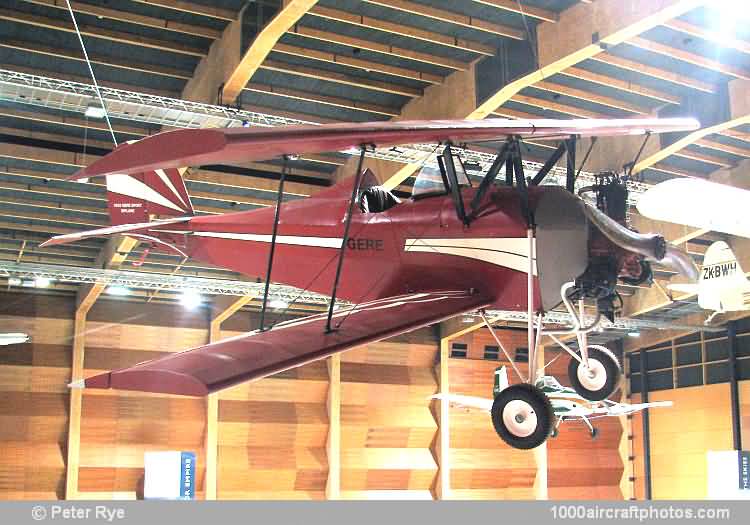04/30/2014. Remarks by Johan Visschedijk: "In the early 20th century, few people in New Zealand could afford factory-built aircraft, and New Zealander's do-it-yourself attitude and lack of funds led to many people attempting to build their own. There was literature available on how to build aircraft and aeronautics, in magazines such as 'Flight' and 'Aeroplane'.
The arrival of Australian aviation pioneer Charles 'Smithy' Kingsford-Smith to New Zealand on the Southern Cross in 1928 inspired many New Zealanders to fly. 'Smithy' also helped and supported various people by test-flying their homebuilt. Many of the New Zealand homebuilt designs of the 1930s, often powered by motorcycle engines, were unsuccessful, although some flew and a few received a CofA.
One homebuilt types of that era was the Gere Sports Biplane. American George E. 'Bud' Gere, Jr. designed it while a student at the University of Minnesota, USA. Of mixed wood and steel construction, covered with fabric an plywood, it was fitted with an landing gear using large diameter air wheels instead of the usual shock struts, and the power plant consisted of a 19 hp Chevrolet car engine.
Unfortunately Gere was killed in an ice-sled accident before the aircraft was ready, however, George Gere Sr. and some friends finished the aircraft. Registered NC10700 (c/n X1), it was first flown by Elmore Wall (a Mohawk Aircraft test pilot) from Wold-Chamberlain Field, St. Paul, Minnesota. A set of plans for the type was published in the 1933 Flying Manual and at least three more were registered in the USA, while also some were built in other parts of the world.
The pictured aircraft was built in 1932 and is the only surviving Gere Sport in New Zealand. It was acquired from its constructor by Stan Smith of Auckland and was donated to the MoTaT Museum in June 1966. Subsequently it was restored by MoTaT member Norman Holloway and is presently on display, fitted with a 40 hp Szekely SR-3 three-cylinder radial."
